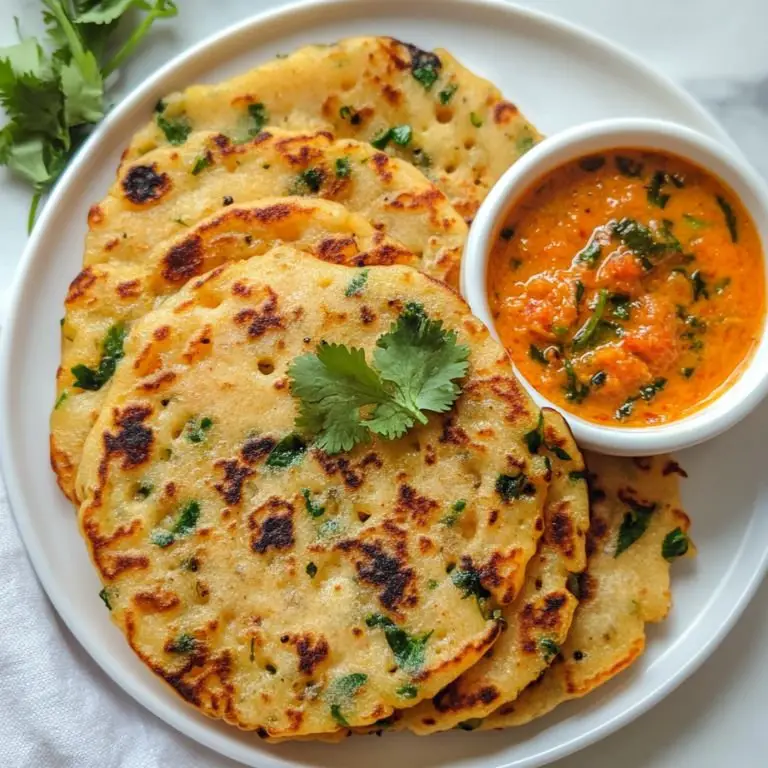Uttapam is one of those dishes that brings back warm, lazy weekend mornings for many of us—when the kitchen smells of fermented batter sizzling on a hot griddle, and you’re waiting impatiently for that crispy-on-the-outside, soft-on-the-inside pancake to land on your plate. Fluffy uttapam pancakes are like the heartier, more rustic cousin of dosas—thicker, loaded with veggies, and a total comfort food. Whether you enjoy them with coconut chutney or a bowl of tangy sambar, these fluffy pillows of savory goodness are a classic part of South Indian meals. Today, we're diving into a recipe that makes uttapam easy, flavorful, and foolproof—even if you've never worked with fermented batter before.
Fluffy Uttapam Pancakes
Prep Time 20 minutes mins
Cook Time 20 minutes mins
Fermentation 10 hours hrs
Total Time 10 hours hrs 40 minutes mins
Course Breakfast, Dinner, Snack
Cuisine Indian
Cast iron tawa or nonstick skillet A well-seasoned cast iron griddle gives the best texture—crispy edges and a soft center. A nonstick pan also works fine if that’s what you have.
Blender or Wet Grinder Essential for grinding the rice and urad dal smoothly. A high-powered blender can do the job for small batches.
Mixing bowls You’ll need a couple—one for fermenting the batter and another for prepping the toppings.
Ladle To spread the batter evenly on the pan.
Flat spatula For flipping the uttapams.
Fermentation-safe container Stainless steel or glass bowls are ideal. Avoid plastic for long fermentation.
For the batter
- 1 cup parboiled rice idli rice works best
- ¼ cup urad dal skinned black gram
- 2 tablespoons poha flattened rice
- ½ teaspoon fenugreek seeds
- Salt to taste
- Water as needed for grinding and fermenting
For the toppings
- 1 medium red onion finely chopped
- 1 small tomato deseeded and chopped
- 2 green chilies finely chopped
- 1 small carrot grated (optional, but adds a touch of sweetness)
- 2 tablespoons fresh coriander chopped
- 1 teaspoon cumin seeds
- A pinch of chaat masala optional, for a tangy twist
- Ghee or oil for cooking
Optional ingredients
- A sprinkle of grated coconut for a Kerala-style twist
- Crushed black pepper for extra spice
- A touch of grated beetroot for color and nutrition
Prepare the Batter
Rinse the rice, urad dal, and fenugreek seeds thoroughly. Soak them together in water for at least 4–6 hours. Soak the poha separately for about 30 minutes before grinding. Once soaked, grind the mixture into a smooth batter, adding water as needed. The consistency should be like thick pancake batter—pourable but not runny.
Add salt and transfer to a large bowl, leaving room for fermentation. Cover loosely and allow it to ferment in a warm place for 8–12 hours. You’ll know it’s ready when it has doubled in volume and smells slightly sour.
Prep the Toppings
While your pan heats, mix all your chopped vegetables, coriander, and spices in a bowl. Keep them ready near the stovetop for quick topping.
Make the Uttapams
Heat your skillet over medium heat. Lightly grease with oil or ghee. Pour a ladleful of the batter onto the center and spread gently into a 5–6 inch circle, about ½ inch thick. Sprinkle the veggie mix generously over the top and press lightly with the back of the ladle.
Drizzle a little oil or ghee around the edges and cook covered for 2–3 minutes until the underside is golden. Flip carefully and cook the other side for another 2 minutes. Transfer to a plate and repeat.
Serve Hot
Uttapams are best enjoyed straight off the pan, while the edges are still crisp. Serve with coconut chutney, tomato chutney, or a steaming bowl of sambar.
Perfect Pairings
Uttapam is delightfully versatile when it comes to pairings. Traditionally, it’s served as part of South Indian food recipes alongside tangy sambar and cooling coconut chutney. But there’s plenty of room for creativity.
- Sambar: Try a vegetable sambar with drumsticks, pumpkin, and carrots for a hearty meal.
- Coconut Chutney: Freshly grated coconut, green chilies, and tempered mustard seeds make for the classic chutney choice.
- Tomato Garlic Chutney: For those who like a spicy, garlicky punch.
- Pudina (Mint) Chutney: Great for summer, this pairs particularly well with rava uttapam or suji uttapam.
- Masala Chai: If you’re having this for breakfast or a light dinner, a cup of spiced tea goes surprisingly well with it.
If you're looking to turn this into a more elaborate brunch, include a small bowl of paniyaram on the side—another South Indian classic that uses similar batter. The combo is indulgent but still rooted in comfort.
FAQs
1. Can I use instant batter or semolina instead of fermenting rice and dal?
Yes! A Suji Uttapam Recipe using semolina (rava) is a great shortcut. Just mix semolina with yogurt, salt, and water to make a thick batter. Let it rest for 15–20 minutes before using.
2. Which vegetables work best as toppings?
Onions, tomatoes, green chilies, and carrots are classic. But you can experiment with bell peppers, grated zucchini, corn, or even chopped spinach. The key is to chop everything fine so it cooks quickly.
3. Is it necessary to ferment the batter?
For the traditional uttapam flavor and fluffiness, yes. Fermentation adds a slight sourness and makes the batter rise naturally. However, for a quick fix, use rava or suji.
4. Can I make this as part of Upwas Recipes Indian traditions?
For fasting or upwas days, you can modify the batter using samak rice (barnyard millet) or use vrat-friendly flours like amaranth (rajgira). Skip onions and regular salt, and use rock salt (sendha namak) instead.
5. Is uttapam a part of Maharashtrian food or just South Indian?
While uttapam is distinctly South Indian, its popularity has transcended regions. In many Maharashtrian recipes collections, especially in tiffin menus, you’ll find a variation of uttapam, sometimes served with coconut chutney and poha or sabudana khichdi for a cross-regional breakfast platter.
